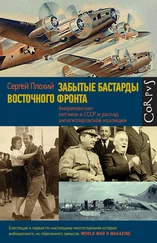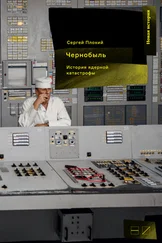In December 1985, Maiorets had come to Prypiat to see for himself what was going on at the construction site; he wanted to speed up the work, which was already falling behind. In his presence, the Kyiv regional party committee issued a resolution calling for an uptick in the pace. The party used the main tool at its disposal—a barrage of reprimands to the officials deemed responsible for the delays. Some were oral, others written, and still others recorded in the personal party files of the victims. If those did not work, the official would be fired. If the situation improved, the reprimands would be withdrawn, the manager rewarded, and the game would start again. In January 1986 Prypiat managers became the targets of party reprimands. Among the victims was R. L. Soloviev, Briukhanov’s deputy responsible for construction projects—that is, for working with Kyzyma and his people. At a meeting of the Prypiat city party committee, Soloviev was issued a reprimand of the severest kind—it was recorded in his party file. Kyzyma and his deputies were spared, for the time being.
Kyzyma was a rarity among Soviet officials in unhesitatingly opposing party officials who wanted him to divert scarce resources from the plant he was building and the city he adored to anything other than the purposes for which they were intended. Ever since the forcible collectivization of farms in the Stalin era, agriculture, as a sector of the Soviet economy, had been chronically lagging. The party, in order to increase production, had resorted to a system of “partnerships” between large urban industrial and scientific enterprises and collective farms; in practice, that meant sending urbanites to the villages to help with farm work. Party officials in Prypiat demanded that nuclear plant personnel and construction workers do their part, and the local newspaper would regularly report on the results. Briukhanov complained, but he sent his people to the neighboring collective farms. Kyzyma, however, simply refused.
On one occasion when a party boss demanded agricultural labor from the nuclear plant personnel, Kyzyma, red in the face, asked his secretary to connect him with party headquarters in Kyiv. I have your man here in my office, Kyzyma told the official at the other end of the line. He is telling me what to do, but my plate is full. Please figure out for yourselves who is boss here, him or me. He hung up the receiver, and that was the end of the matter. Given the importance of nuclear energy, party officials had little choice but to back down. But they were furious: as they saw it, Kyzyma was getting away with murder. 9
One of Kyzyma’s tools in dealing with the growing party pressure was his use of the media to make sure party officials helped him by insisting that suppliers deliver products to the construction site in a timely fashion. Kyzyma had learned media tactics long before the era of glasnost, or openness, declared by Mikhail Gorbachev and his reformers. In the spring of 1980, Kyzyma and Briukhanov were summoned to Moscow to report to the deputy prime minister of the all-Union government on the construction of the third unit of the power plant. Representatives of other plants attended as well, but none of them were doing worse than Chernobyl. If average fulfillment of construction quotas was approaching 90 percent, Kyzyma and Briukhanov reported the fulfillment of only 68 percent of their quota. The problem was lack of qualified personnel, equipment, and supplies. They were ordered to catch up within a month—an impossible task, since they were at least two or three months behind the original schedule. 10
With the revised deadline in jeopardy and new reprimands on their way from the very top of the Soviet party and state pyramid, Kyzyma invited Oleksandr Boliasny, a reporter for the regional communist newspaper, Kyïvs’ka pravda [Kyiv Truth], to his office for an interview. The editor in chief expected an upbeat report and a pledge that the quotas would be fulfilled in the shortest possible amount of time. Instead, Kyzyma kept Boliasny in his reception room for hours while he himself took pen and paper and personally wrote responses to the interview questions. Kyzyma explained that the unit would not be finished on time because the requisite supplies simply were not there. Miracles did not happen in the socialist economy. He wanted party officials to put pressure on the vendors and make them fulfill their obligations. The terrified newspaper editor called the party officials, who were not happy but eventually gave their go-ahead for publication of the interview. After all, it shielded them as well against unjust criticism from Moscow. 11
In early 1986, the problem with the construction of Unit 5 was similar: the construction crews were there, but the supplies were not. With the reduction of the construction cycle, decreed long before similar resolutions were passed by the party congress in Moscow, Kyzyma and his people did not get their design documentation until July 1985. That delayed their orders for construction materials and equipment until the fall, and the vendors began to deliver construction blocks and hardware only at the end of that year. Some arrived on time, but others did not, halting the installation process.
When Liubov Kovalevskaia, a reporter for the Prypiat newspaper Tribuna ėnergetika , approached Kyzyma with the idea of publishing a special issue discussing the problems with vendors, he readily agreed. More important, in a violation of security regulations, he gave Kovalevskaia permission to consult data collected by the nuclear plant’s computer center on the quantity and quality of hardware supplied by the vendors. That was a major coup for her, but others were less obliging than Kyzyma. Mindful of the watchful eye of the KGB, the computer center’s managers allowed Kovalevskaia to work with printouts of the spreadsheets for only fifteen minutes, hoping that Kovalevskaia, a teacher of the Russian language and literature by training, would not be able to understand much of what they contained. She managed to work on the spreadsheets for half an hour, though, taking a lot of notes.
The figures that Kovalevskaia copied added up to a terrifying picture. As much as 70 percent of the hardware supplied by one of the vendors had serious defects. Of the metal structures for the reservoir that would store used nuclear fuel, 356 metric tonnes (392 US tons) had major defects as well. Concrete panels supplied by another vendor were of the wrong size and had to be adjusted on the construction site. But the main problem was that even if some parts were up to specifications, others had not yet arrived—altogether, 2,435 metric tonnes (2,684 US tons) of metal structures were still missing. Kyzyma gave his go-ahead for publication of the article, which appeared under Kovalevskaia’s pen name, L. Stanislavskaia, in Tribuna ėnergetika on Friday, March 21, 1986. The all-Union meeting of representatives of the suppliers was scheduled to start on the following Monday. 12
Anatolii Diatlov, the deputy chief engineer of the Chernobyl nuclear plant, believed that Kyzyma’s workers were doing a good job of building the plant. They were also very successfully withstanding pressure from party and industry officials, who were making unrealistic demands and setting impossible deadlines. According to Diatlov, Kyzyma and his subordinates “did not take all those assaults seriously, although that attitude was not on display …. Otherwise, it would be impossible to survive for long under those working conditions.” 13
As far as Diatlov was concerned, the main problem was not with Kyzyma but with the lack of a proper manufacturing base for the construction of nuclear plants, and hence the problems with vendors. Nuclear power stations like the one in Chernobyl were no longer the responsibility of Yefim Slavsky, the all-powerful head of the Ministry of Medium Machine Building, which was the hub of the Soviet nuclear program and its military-industrial complex. Slavsky’s ministry was a virtual empire, a state within a state with its own manufacturing plants capable of producing most of the equipment needed for the nuclear industry. Those plants had been used to build the nuclear power station at the Sosnovyi Bor settlement near Leningrad, where the first reactor began producing electrical energy in December 1973. But soon after that the construction of nuclear power stations had become the responsibility of the Ministry of Energy and Electrification, which was not part of the military-industrial complex; it had a poor manufacturing base of its own and none of the political clout that came with Slavsky’s power and prestige.
Читать дальше
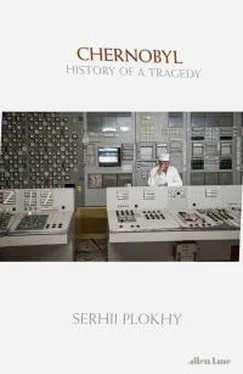

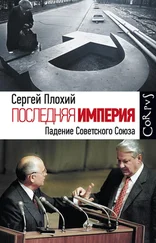

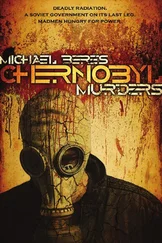

![Сергей Плохий - Чернобыль - История ядерной катастрофы [litres]](/books/385171/sergej-plohij-chernobyl-istoriya-yadernoj-katastrof-thumb.webp)
![Сергей Плохий - Человек, стрелявший ядом [История одного шпиона времен холодной войны]](/books/405163/sergej-plohij-chelovek-strelyavshij-yadom-istoriya-od-thumb.webp)

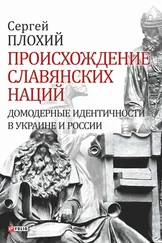
![Сергей Плохий - Потерянное царство. Поход за имперским идеалом и сотворение русской нации [c 1470 года до наших дней]](/books/433093/sergej-plohij-poteryannoe-carstvo-pohod-za-impersk-thumb.webp)
